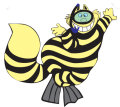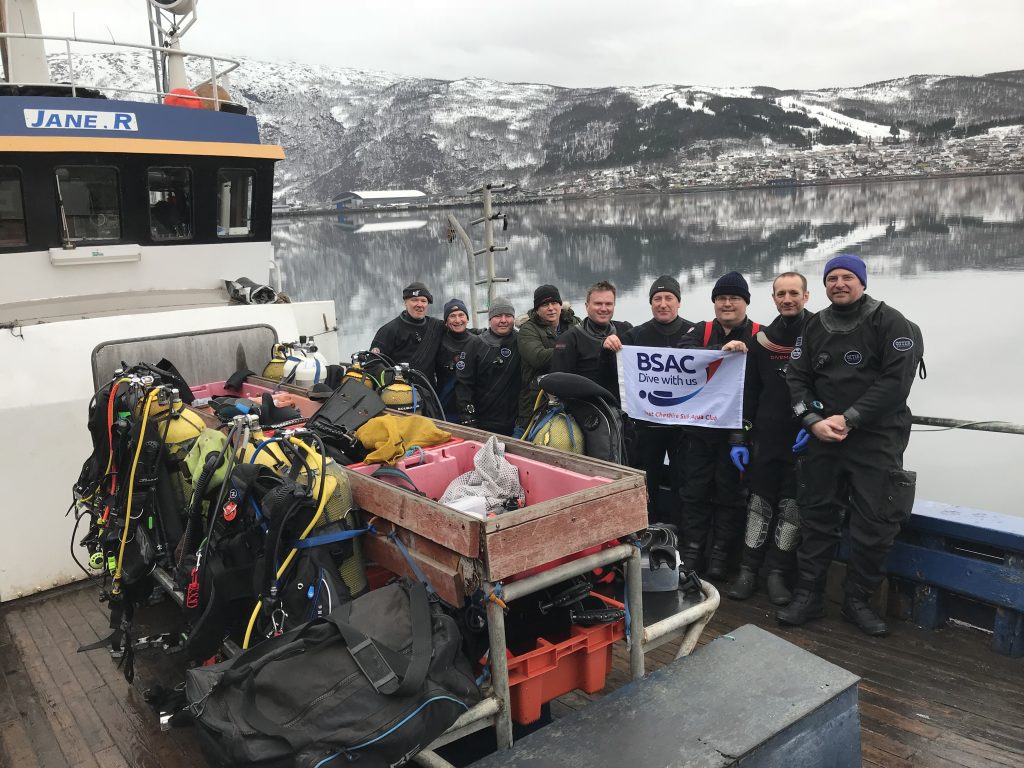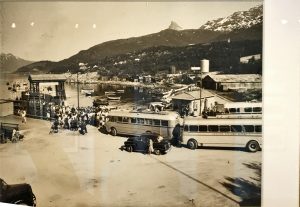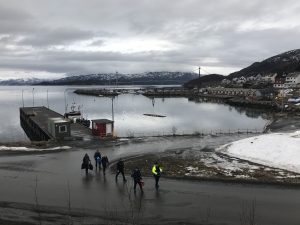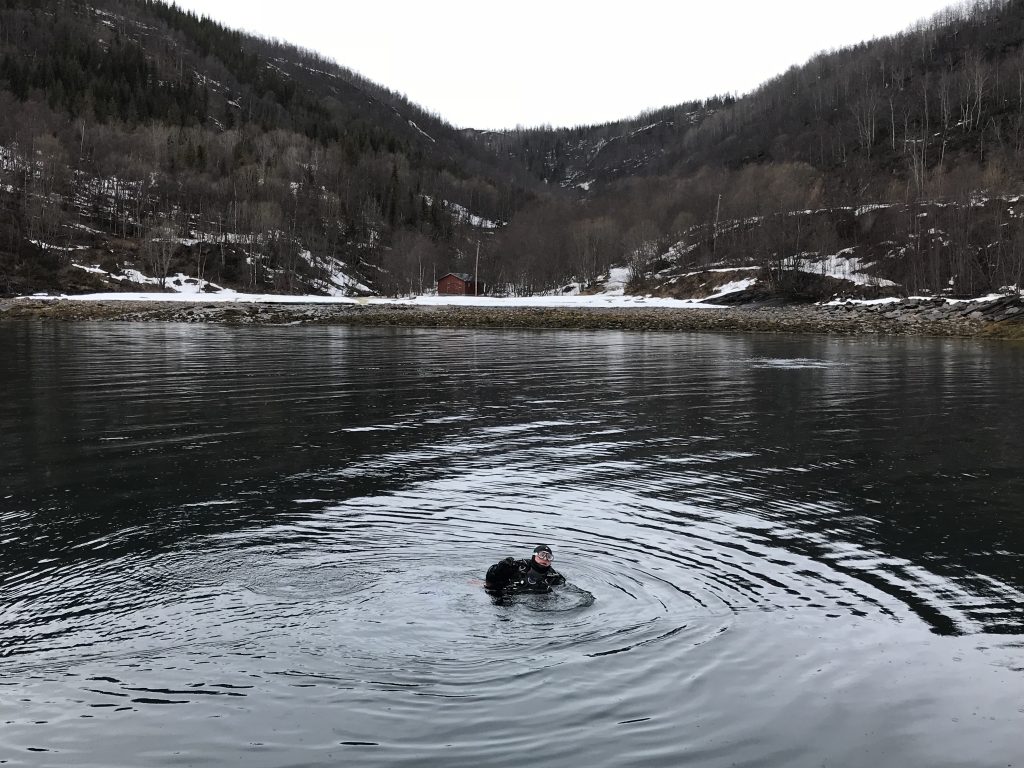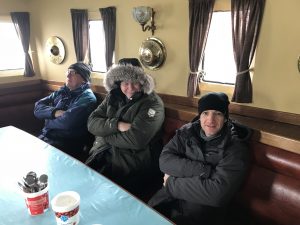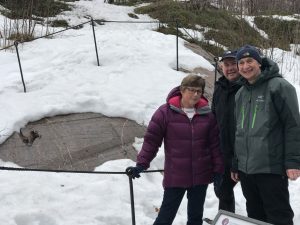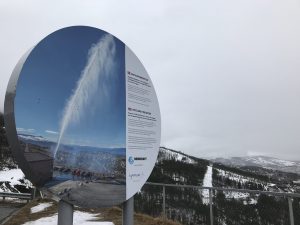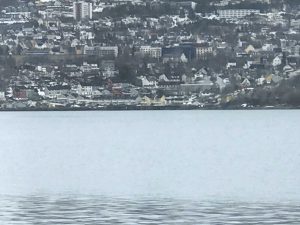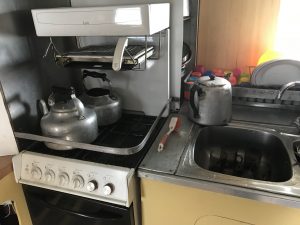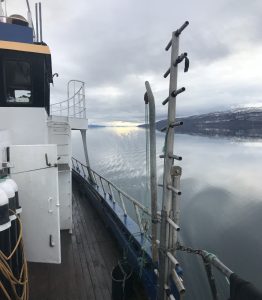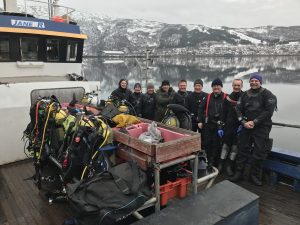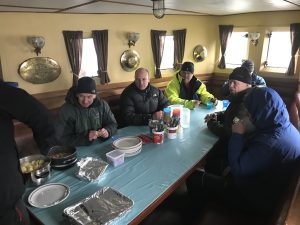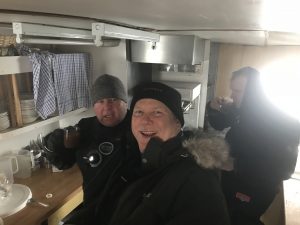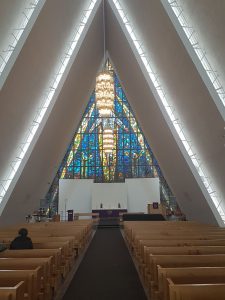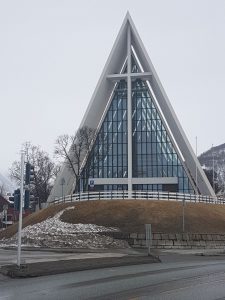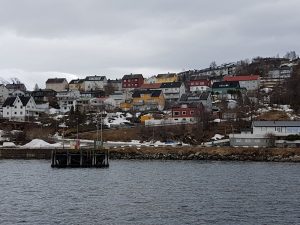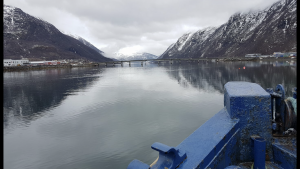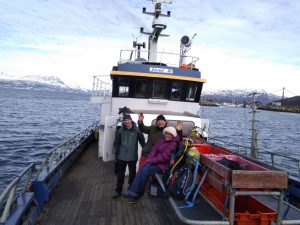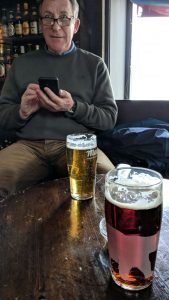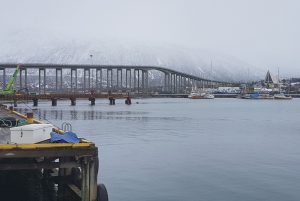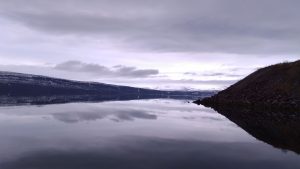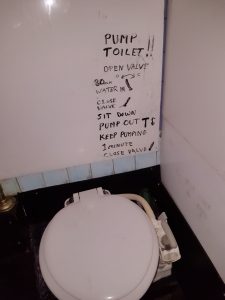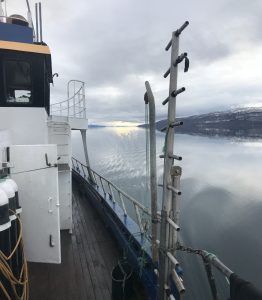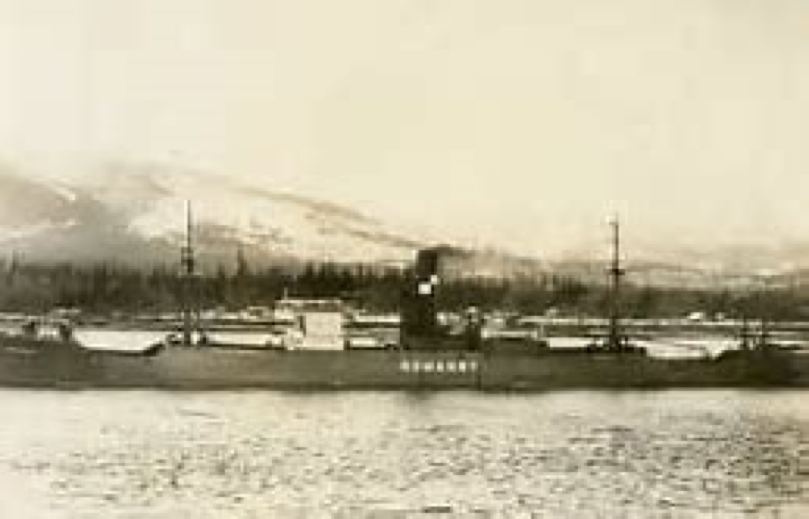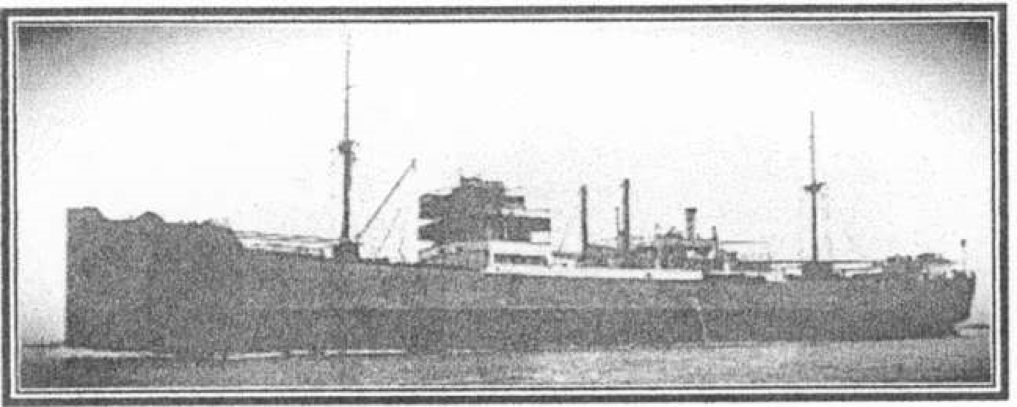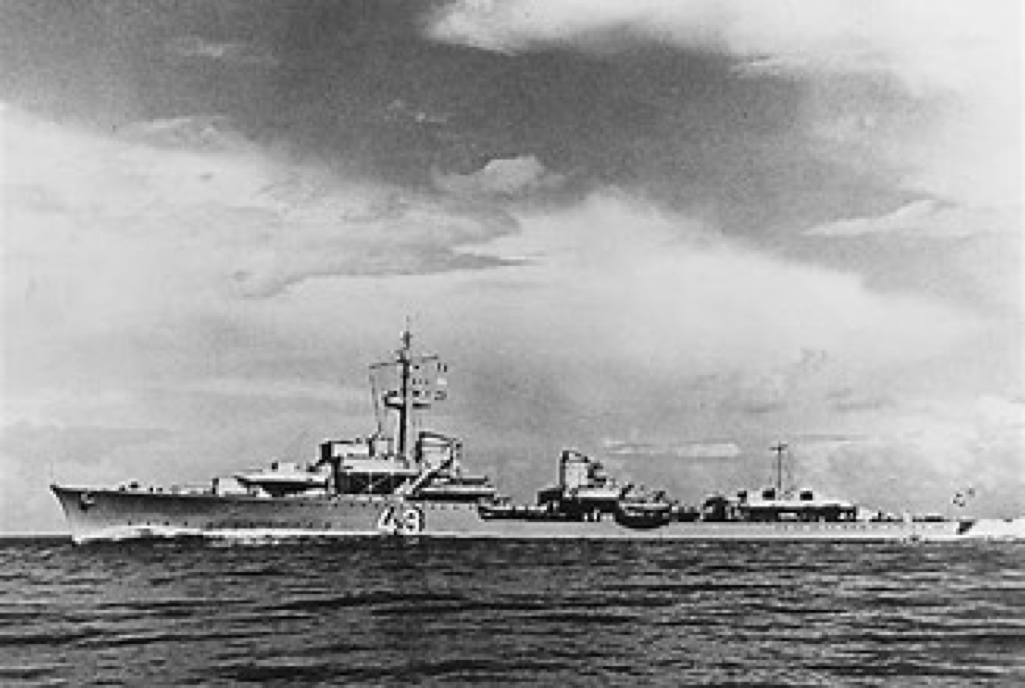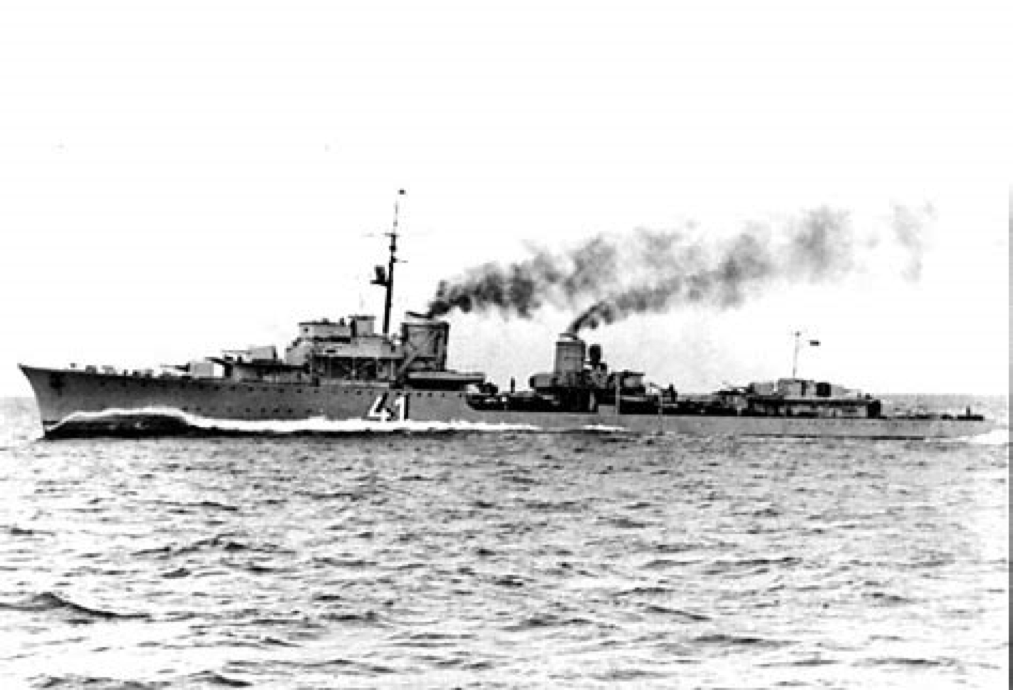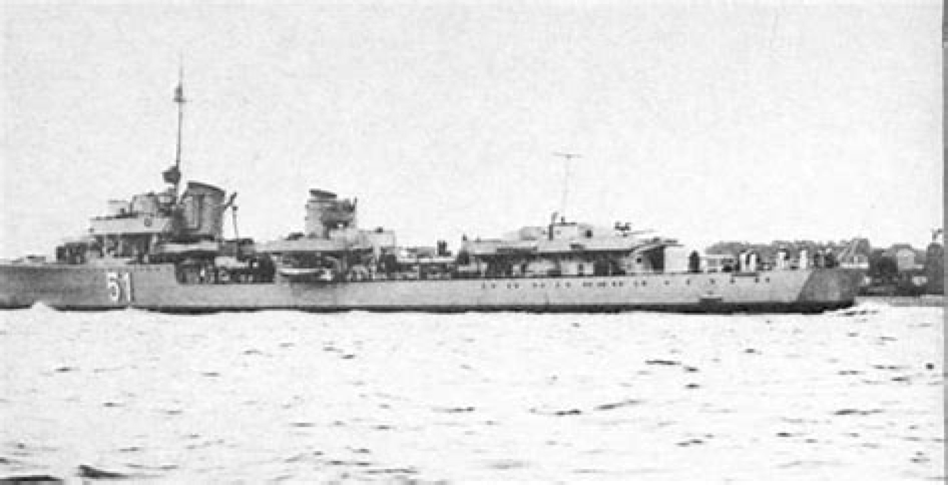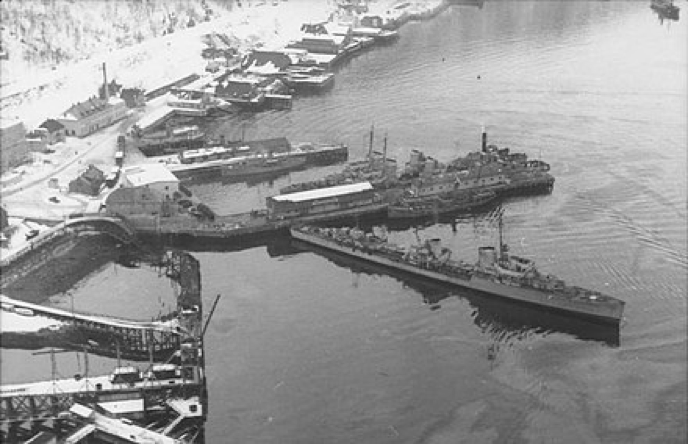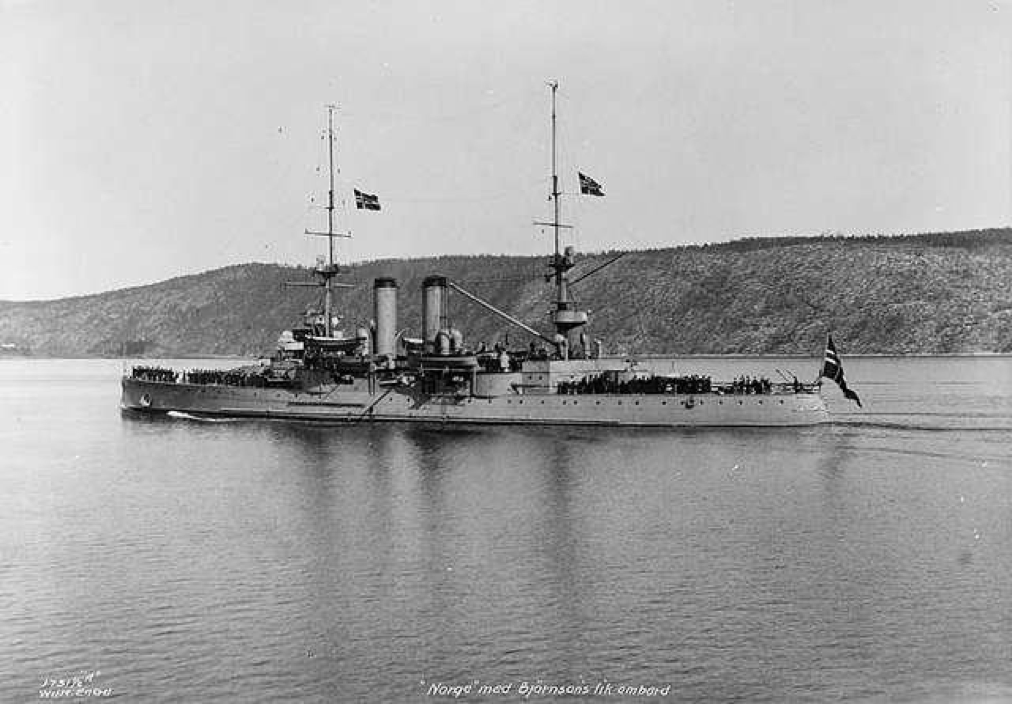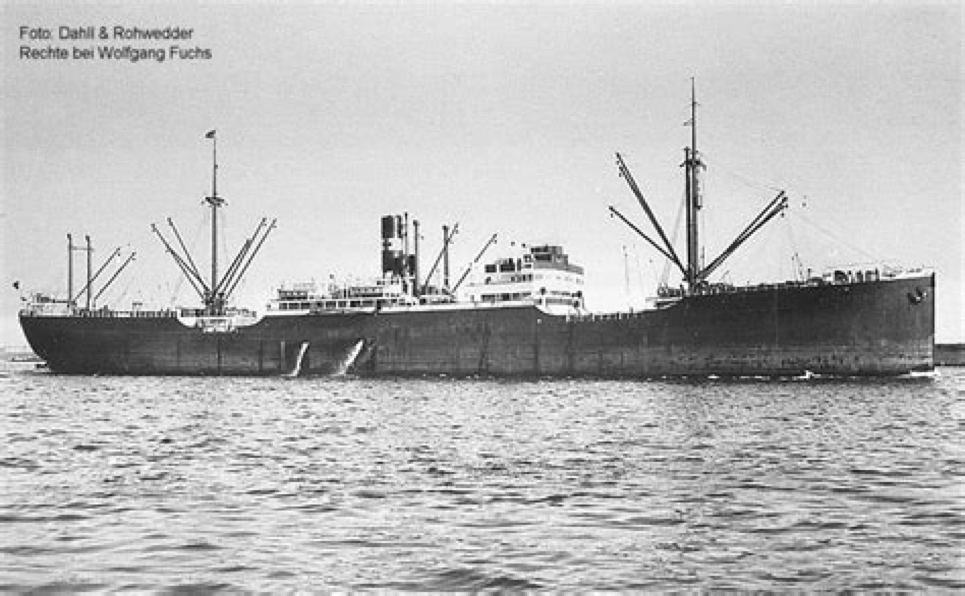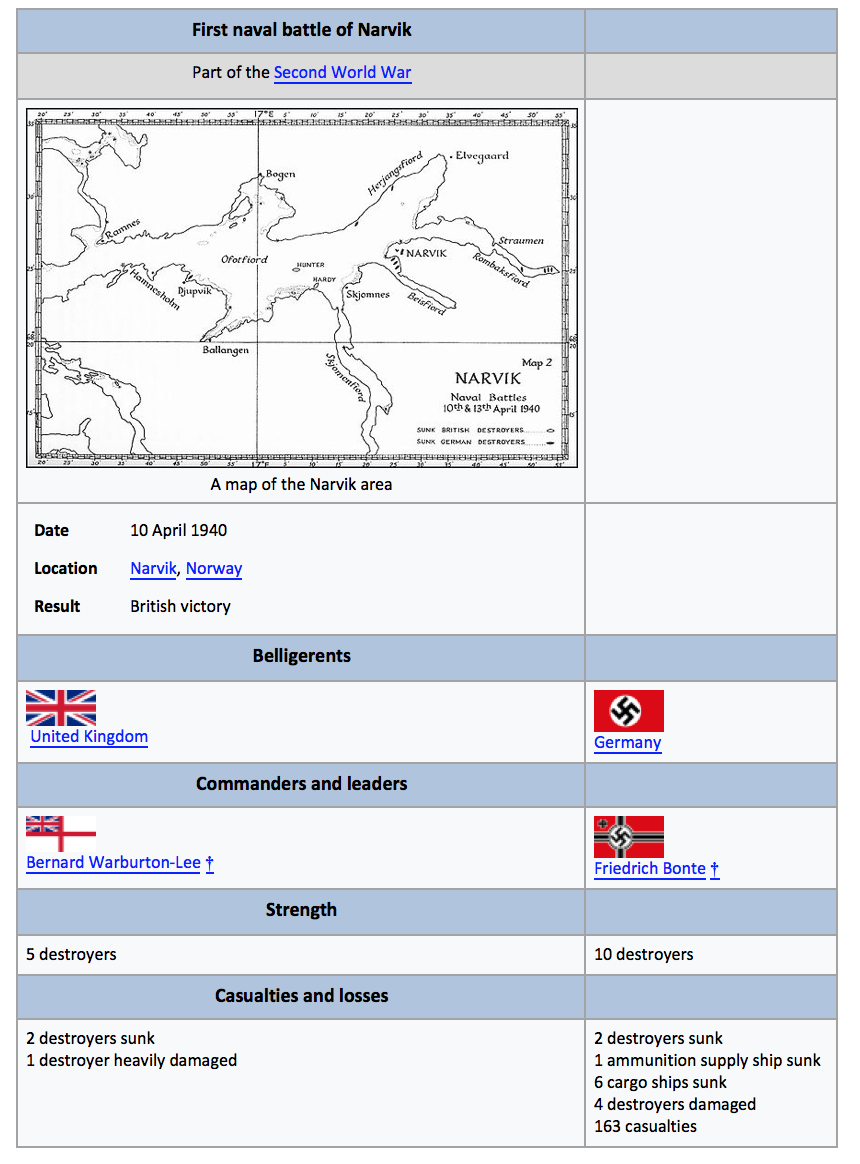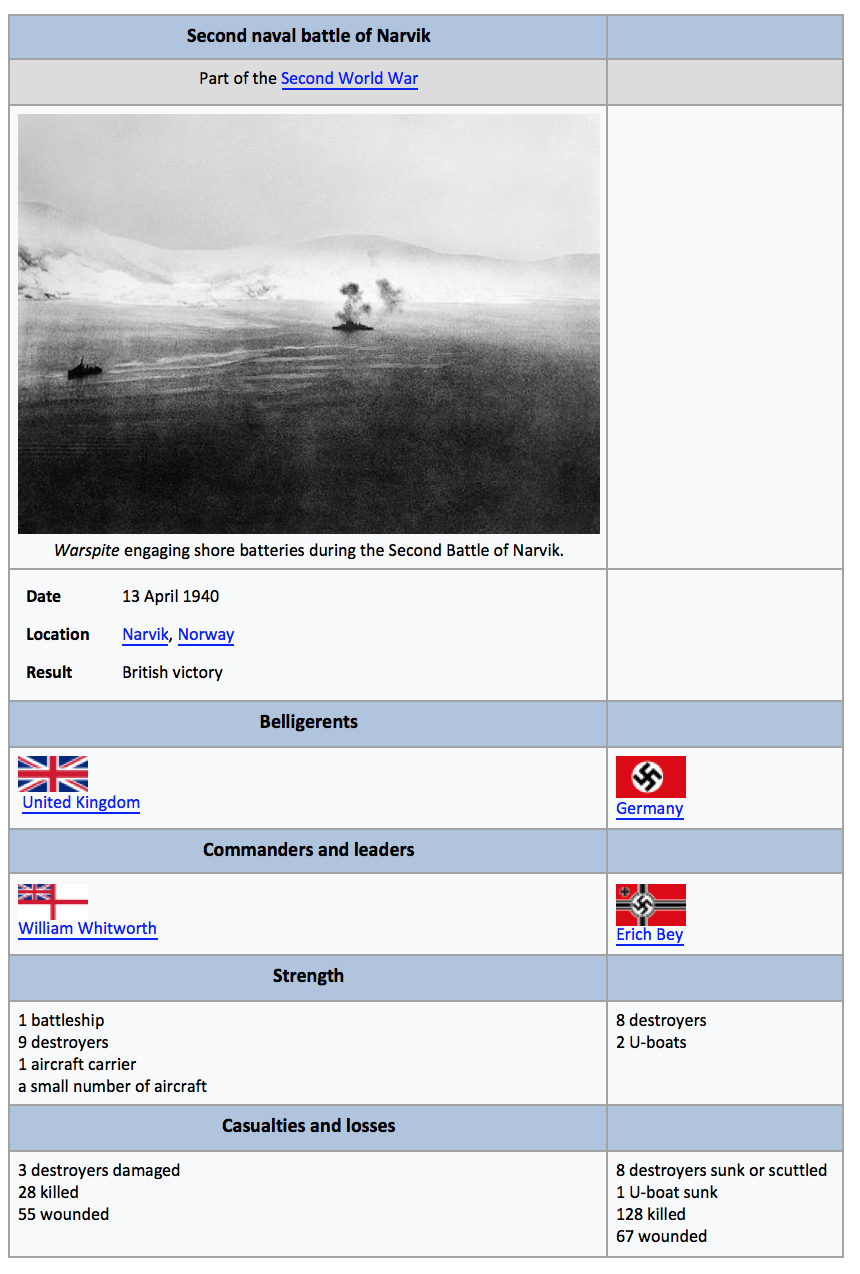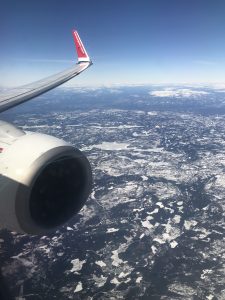 An intrepid crew set off from the UK via trains, planes and automobiles making our way to Narvik the scene of large scale naval action in the spring of 1940 resulting in one of the few British victories in Scandinavia during the early months of World War II. Flights from Gatwick, via Oslo to Tromso took us up into the Arctic Circle and then a 250km drive down through the beautiful Fjords of Northern Norway down to the harbour town of Narvik, the third-largest town and municipality in Nordland county.
An intrepid crew set off from the UK via trains, planes and automobiles making our way to Narvik the scene of large scale naval action in the spring of 1940 resulting in one of the few British victories in Scandinavia during the early months of World War II. Flights from Gatwick, via Oslo to Tromso took us up into the Arctic Circle and then a 250km drive down through the beautiful Fjords of Northern Norway down to the harbour town of Narvik, the third-largest town and municipality in Nordland county.
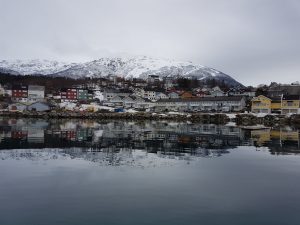 Our host for the week was Skipper/Salvage Diver and general character Gordon Wadsworth. Gordon has been running boat charters for 20+ years aboard his boat the Jane R and can be relied upon for many amusing anecdotes of daring doo and disasters from the past, as well as his down to earth (some may say primitive) Yorkshire hospitality onboard the Jane R…
Our host for the week was Skipper/Salvage Diver and general character Gordon Wadsworth. Gordon has been running boat charters for 20+ years aboard his boat the Jane R and can be relied upon for many amusing anecdotes of daring doo and disasters from the past, as well as his down to earth (some may say primitive) Yorkshire hospitality onboard the Jane R…
The group concluded that Gordon was a maritime version of Fred Dibnah.. “wi tales from down’t pit an blastin t’shit out of owt that din’t move”. He is certainly a one man show of stories to keep the boat amused!
Gordon recounted stories of living on the boat in minus 20 degrees, surviving a hurricane (that was too hardcore for even the coastguard to come to his aid) and the boat sinking after being smashed into its jetty. Certainly hardcore tales of survival in the face of adversity!
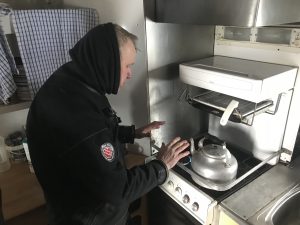
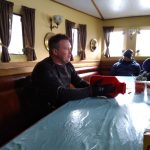 Talking of adversity, to say it was cold would be somewhat of an understatement, although the water was a bearable 4 degrees (with icy fresh water runoff pouring into the Fjord from the rapidly melting snow on the mountains) the boat heating system was still frozen solid from its seven month winter storage at sub-zero temperatures so the only heat on the boat was from the gas ring on the cooker…. amply demonstrated by Mark on the right (and me clutching the hot water bottle on the left). So once leaving the water after the first dive it was pretty tricky to get warm for the next dive, copious cups of warm tea, hot soup and really good freshly cooked Norweigan food (delivered to the quayside) were the order of the day and of course huddling around the cooker.
Talking of adversity, to say it was cold would be somewhat of an understatement, although the water was a bearable 4 degrees (with icy fresh water runoff pouring into the Fjord from the rapidly melting snow on the mountains) the boat heating system was still frozen solid from its seven month winter storage at sub-zero temperatures so the only heat on the boat was from the gas ring on the cooker…. amply demonstrated by Mark on the right (and me clutching the hot water bottle on the left). So once leaving the water after the first dive it was pretty tricky to get warm for the next dive, copious cups of warm tea, hot soup and really good freshly cooked Norweigan food (delivered to the quayside) were the order of the day and of course huddling around the cooker.
Some of the food did fox us, after the food is delivered to the boat piping hot, we then served the food from the carry crates it was delivered in, one day we enjoyed fishcakes and vegetables and were all looking forward to the waffles and custard that sat in the crate….
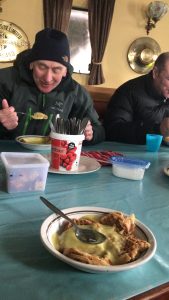 Having served the waffles, and with 10 bowls ready with the waffles in, the question was asked, “Who wants Custard?”… to a man the answer was a “Yes, me”..
Having served the waffles, and with 10 bowls ready with the waffles in, the question was asked, “Who wants Custard?”… to a man the answer was a “Yes, me”..
So 10 bowls of custard and waffles were duly sent to the table and everyone with spoons poised dug in……
It turns out it was not custard but Hollandaise Sauce, meant for the fishcakes….
Not quite the sweet custard we had been hoping for.. and a culinary delight that is unlikely to catch on…
That said at least half of the group still managed to eat at least one waffle! At least the sauce was hot…!
With the next dive looming and the thought of hitting the chilly water a few of us had to admit the fact that we didn’t have an SAS level of tolerance for cold so we asked for an electric heater and sadly we were told that the generator had not survived the harsh winter and so we could not use electric heating on the boat either – so we had to make do with sharing a hot water bottle – at least those of us who weren’t too proud to grab it.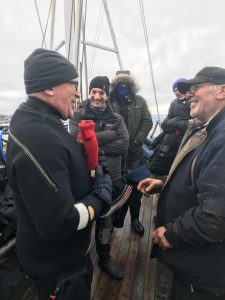
Thankfully the diving did not disappoint, although (due to the meltwater) the viz was not as good as it could be, it was a lot better than Anglesey so we managed to dive the signature wrecks of the Narvik battle, including the really impressive Norge (Nor-Grr), the first ship to be sunk in the battle, which was torpedoed by the Germans when the Norwegians on board refused to surrender. Two torpedos later and she sank in the middle of the harbour.
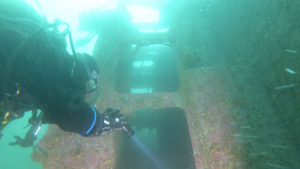 During the week we dived the Strassa, Romanve, Anton Schmidt, Wilhelme Heidkampf, Herman Kunnue, Deitle, Norga and the Neven Felds. With the Norge and Strassa being my personal highlights.
During the week we dived the Strassa, Romanve, Anton Schmidt, Wilhelme Heidkampf, Herman Kunnue, Deitle, Norga and the Neven Felds. With the Norge and Strassa being my personal highlights.
Half way through the week Clive’s neck seal split, about 6 inches of the seal was ripped and with no dive shops within hundreds of miles 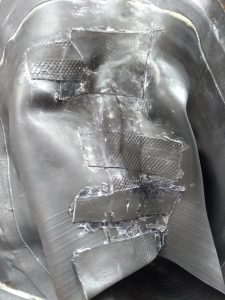 his diving looked under threat… Discussions of sharing drysuits, duck taping the neck shut and other less viable ideas ensued but Clive had a brainwave after watching Mark swap his leaking drygloves for a new pair of marigolds.. Clive then cut the old gloves into strips and made the best repair I have ever seen.. It managed to hold together for the rest of the week and so no diving was missed..
his diving looked under threat… Discussions of sharing drysuits, duck taping the neck shut and other less viable ideas ensued but Clive had a brainwave after watching Mark swap his leaking drygloves for a new pair of marigolds.. Clive then cut the old gloves into strips and made the best repair I have ever seen.. It managed to hold together for the rest of the week and so no diving was missed..
On Wednesday we met up with a member of the local club and discussed plans for diving one of the main wartime wrecks, the Norge.
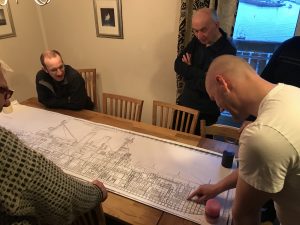 The Norge was one of the two Norwegian naval ships that were sunk by the Germans at the very start of the engagement between the Germans and Norwegians before the British Navy arrived. The Norge was the sister ship to the Eidsvold, two large heavily armed (but sadly outgunned) warships. We got to review some detailed plans from the local museum and were able to plan our dives and the features that we wanted to see on the dive.
The Norge was one of the two Norwegian naval ships that were sunk by the Germans at the very start of the engagement between the Germans and Norwegians before the British Navy arrived. The Norge was the sister ship to the Eidsvold, two large heavily armed (but sadly outgunned) warships. We got to review some detailed plans from the local museum and were able to plan our dives and the features that we wanted to see on the dive.
As the dive on the Norge was to be a late one, we took a morning off from diving and visited the local war and natural history museums which gave us some interesting insights into local culture and the battle that created the wrecks we were diving on. One of the displays showed the quay the dive boat was moored against how it was back in 1956 when it was a ferry terminal. You can see the “then and now” photos of that below.
After we surfaced from the final dive on the last day of the week Gordon informed us that the heating had finally defrosted…. great news…. now get off the boat…
All in all a real experience, a week of fun and good diving on some of the lesser known and lesser dived WW2 wrecks. Not to be forgotten in a while – and it redefined what cold is.. I won’t be complaining of the cold after a dip in Capernwray for a while that’s for sure..
The journey back was also quite varied with some choosing trains to Oslo, some driving to Tromso for a night out and others doing a night out in Tromso and then Oslo the next night. All in all a very different trip to the usual diving we do and quite an adventure.
You can watch the video of the trip on YouTube via the link below:
East Cheshire Narvik Trip 2018 – Dive log and data (from Jon Green)
Day 1 (Friday 20th April 2018)
Finish work train Stockport to Gatwick. Overnight stay in London Gatwick.
Day 2 (Saturday 21st April 2018)
Fly Gatwick to Oslo, Oslo to Tromso then drive to Narvik.
Day 3 (Sunday 22nd April 2018)
Dive 1st wreck ROMANBY (JG Depth 17 Meters)
The Romanby was originally an English ship built at Hartlepool in 1927. On the 10th April she was lying peacefully in Narvik harbour with other merchant ships and some German Destroyers, when the British Destroyers Hardy, Hunter, and Havelock swept into the harbour and tried to sink everything in sight. They completely surprised the Germans, sinking two of their destroyers and severely crippling others. They also shot up and sunk a number of merchant ships, and put a torpedo into the Romanby. The ship sank quite quickly, and now rests upright, with her keel in around 30 meters.
Dive 2nd wreck STRASSA (JG Depth 19 Meters)
The Strassa was an ore carrier built in Stockholm in 1921. On April 6th 1940, the Strassa left Narvik harbour bound for Baltimore in the U.S.A. with a cargo of iron ore and a crew of thirty four men. When she reached the Lofoten Islands the Strassa started to have problems with her cooling system and since repairs could not be carried out at sea the Captain decided to return to Narvik. Here she laid at anchor in Tjeldsundet until April 9th, when she was ordered by the German Destroyer Dieter Von Roeder to proceed into Narvik harbour and await further orders.
She was still waiting for those orders the next day when the British Destroyers swept into the harbour sinking everything in sight. At the height of the battle the Strassa was hit, and the crew wisely abandoned her and got safely to the shore, leaving the Strassa to sink when she now lies in the harbour today.
Day 4 (Monday 23rd April 2018)
Dive 1st wreck: WILHELM HEIDKAMP (JG Depth 23 Meters)
Wilhelm Heidkamp – Z-21 Built: 1939 Shipyard: Deschimag, Bremen #923 Owner: German Navy Weight: 2411 tons displacement Dimensions: 125.1 x 11.8 meters GPS: 68°26.086”N 017°22.643’E
Shortly after dawn on 10 April, the ship was moored aft of Jan Wellem, in Narvik harbour, when the five destroyers of the British 2nd Destroyer Flotilla HMS Hardy, Havock, Hunter, Hotspur and Hero appeared. Z21 Wilhelm Heidkamp was struck in the stern by a torpedo from Hardy‘s first salvo that detonated the ship’s aft magazine. The explosion threw her aft guns into the air and killed 81 men, including Bonte. Although Z21 Wilhelm Heidkamp‘s stern was below water, her captain, Lieutenant Commander (Korvettenkapitän) Hans Erdmenger, managed to moor her to a nearby Swedish freighter. She capsized the following day, but not before her torpedoes were transferred to the surviving destroyers. Her survivors joined the other survivors ashore in an ad-hoc naval infantry unit
Dive 2nd wreck: ANTON SCHMIDT (Destroyer) 21 Meters
Shortly after dawn on 10 April, the five destroyers of the British 2nd Destroyer Flotilla, HMS Hardy, Havock, Hunter, Hotspur and Hero appeared, totally surprising the Germans. Hunter hit Z22 Anton Schmitt with a single 4.7-inch (120 mm) shell and with a torpedo in the forward engine room. And then Havock hit the listing ship with another torpedo that broke her in half, killing or wounding over 50 crewmen. The survivors joined the other survivors ashore in an ad-hoc naval infantry unit.
Day 5 (Tuesday 24th April 2018)
Dive 1st wreck: HERMAN KUNNUEE 32 Meters
Dive 2nd wreck: HERMAN KUNNUEE 33 Meters
Z19 Hermann Künne was allocated to Group 1 for the Norwegian portion of Operation Weserubung in April 1940. The group’s task was to transport the 139th Mountain Infantry Regiment (139. Gebirgsjäger Regiment) and the headquarters of the 3rd Mountain Division(Gebirgs-Division) to seize Narvik. The ships began loading troops on 6 April and set sail the next day. When they arrived off the Ofotfjord on the morning of 9 April, Z19 Hermann Künne landed her troops at the head of the Herjangsfjord and helped to capture the Norwegian Army barracks at Elegardsmoen. Later that day she briefly refuelled from the whale factory ship SS Jan Wellem and then stood picket duty until midnight when she returned to Jan Wellem to top off her fuel tanks.
Shortly after dawn on 10 April, the ship was still tied up to Jan Wellem when the five destroyers of the British 2nd Destroyer Flotilla HMS Hardy, Havock, Hunter, Hotspur and Hero appeared. Hardy, Hunter and Havock made the first attack on Narvik harbour while the other two acted as rear guards. Z19 Hermann Künne exchanged fire with Hunter to no effect while preparing to back away from the whaler. By the time Havock opened fire, the German ship was underway, having cast off hoses and mooring lines. When the British destroyer hit and sank Z22 Anton Schmitt with a torpedo, Z19 Hermann Künne was only 40 meters (44 yd) away and the shock from the detonation knocked out her turbines. Without power, the ship drifted into the wreck and became entangled with it. Some of her crew panicked and jumped overboard, but only a few were rescued. After about an hour, she was able to restore power and disentangle herself from Z22 Anton Schmitt‘s wreck. Z19 Hermann Künne had suffered from splinter damage that killed nine crewmen. Later that afternoon she sailed to the wreck of Hardy where it had ran aground and searched it.
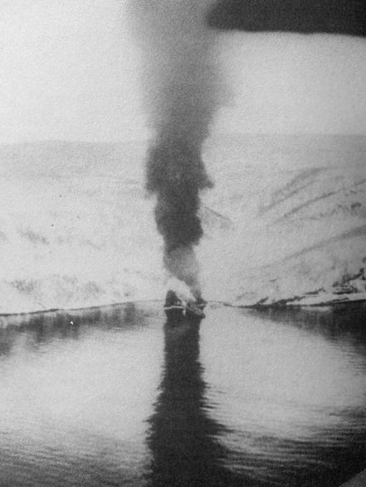 Z19 Hermann Künne burning on 13 April 1940
Z19 Hermann Künne burning on 13 April 1940
On the night of 12/13 April, Commander (Fregattenkapitän) Erich Bey, the senior surviving German officer, received word to expect an attack the following day by British ships escorted by a large number of destroyers and supported by carrier aircraft. The battleship Warspite and nine destroyers duly appeared on 13 April, although earlier than Bey had expected, and caught the Germans out of position. Z19 Hermann Künne, leading Z13 Erich Koellner westwards to take up her position flanking the entrance to the fjord, was the first ship to spot the approaching British ships and alerted Bey. The other operable destroyers joined Z19 Hermann Künne as she fell back and engaged the British ships at long range from behind a smoke screen. Nine Fairey Swordfish torpedo bombers attacked the German destroyers, near-missing Z19 Hermann Künne and another ship, but lost two aircraft shot down during the attack. By the early afternoon, the Germans had exhausted most of their ammunition and Bey ordered his ships to retreat to the Rombaksfjorden (the easternmost branch of the Ofotfjord), east of Narvik, where they might attempt to ambush any pursuing British destroyers. Lieutenant Commander (Korvettenkapitän) Friedrich Kothe, captain of the ship, misunderstood the signal and headed north into the Herjangsfjord where he ran the ship aground near Bjerkvik. She had fired off all of her ammunition, including practice and star shells; her depth charges were rigged for demolition and they were set off once the crew had abandoned ship. The destroyers Eskimo and Forester followed the German ship into the Herjangsfjord and the former put a torpedo into the wreck for good measure, breaking off her stern.
Day 6 (Wednesday 25th April 2018)
Dive 1st wreck: DEITLE 20 Meters
Z17 Diether von Roeder was allocated to Group 1 for the Norwegian portion of Operation Weserubung in April 1940. The group’s task was to transport the 139th Mountain Infantry Regiment (139. Gebirgsjäger Regiment) and the headquarters of the 3rd Mountain Division (Gebirgs-Division) to seize Narvik. The ships began loading troops on 6 April and set sail the next day. When they arrived off the Ofotfjord on the morning of 9 April, the ship remained at the mouth of the fjord while the other destroyers continued into the fjord to land their troops; she was tasked to serve as a picket ship to warn of any British attempt to interfere with the landings. Z17 Diether von Roeder was relieved later in the day to land her troops, but resumed her task the following night. Lieutenant Commander (Korvettenkapitän) Erich Holtorf, the ship’s captain, believed that his orders ended at dawn and returned to Narvik harbour.
Unbeknownst to the Germans, the five destroyers of the British 2nd Destroyer Flotilla, HMS Hardy, Havock, Hunter, Hotspur and Hero were not far behind him, invisible in the dark and snow. They torpedoed two German destroyers and badly damaged two others while Z17 Diether von Roeder fired all of her torpedoes blindly at the harbour entrance and attempted to engage the British ships with her guns despite the driving snow. All of the torpedoes missed, possibly because their depth controls were set too deep, and her gunfire was ineffective. Visibility cleared as the leading British ships finished their attack on the harbour and several of them engaged Z17 Diether von Roeder. She was hit by at least five 4.7-inch (120 mm) shells that destroyed No. 3 gun, severed the controls to the rudder, damaged the centre and aft boiler rooms, knocking out all power, and set an oil tank on fire. The British shells killed nine of the ship’s crew; most of the survivors were used to help secure the town of Narvik. Z17 Diether von Roeder‘s radios were taken ashore and used to improve communications with other German commands within Norway.
Z17 Diether von Roeder (front) at Narvik, the destroyer in the back is Z9 Wolfgang Zenker. The smaller vessels are captured Norwegian patrol boats.
Over the next several days, the ship’s damage was evaluated and the Germans estimated that it would take at least a week to make her mobile again. In the meantime, her light weapons were off-loaded and her stern was tied to the pier in the harbour with her bow angled outwards. This meant that only her two forward guns could bear on targets. On the night of 12/13 April, Commander (Fregattenkapitän) Erich Bey, the senior surviving German officer, received word to expect an attack the following day by British ships escorted by a large number of destroyers and supported by carrier aircraft. The Battleship Warspite and nine destroyers duly appeared on 13 April, although earlier than Bey had expected, and caught the Germans out of position.
When the British destroyers Punjabi and Bedouin appeared at the harbour mouth, engaging Z12 Erich Giese, the 25 gunners left on board opened fire on whatever British ships were visible, including Warspite. One of the Z17 Diether von Roeder‘s shells hit the battleship’s bridge, but only caused minor damage. The British initially thought that they were fired upon by coastal artillery in the smoke and confusion, but a report from a Fairey Swordfish torpedo bomer from Warspite revealed the German ship. The destroyer Cossack moved through the sunken freighters to investigate and opened fire at 2,500 meters (2,700 yd). She started making hits with her second salvo and set the German ship’s stern aflame, but Z17 Diether von Roeder‘s return fire was devastating. The British destroyer was hit at least seven times that severed the steam pipe to the forward boiler room, damaged the centre boiler room, started a fire, and knocked out her steering gear, causing her to run aground. The German shells killed 9 men and wounded 21. The destroyer Kimberley and Warspite returned fire, the latter even hitting Z17 Diether von Roeder once, but the gunners had abandoned ship once their ammunition was exhausted and only the three-man demolition party was still aboard when the destroyer Foxhound approached. They lit the fuses and ran ashore; the depth charges packed into her interior exploded when the British ship was less than 50 meters (55 yd) away with a boarding party ready.
Dive 2nd wreck: NORGE 25 Meters
Built as part of the general rearmament in the time leading up to the events in 1905, Norge remained, along with her sister-ship Eidsvold, the backbone of the Royal Norwegian Navy for just over 40 years. Norge and Eidsvold were the largest vessels in the Royal Norwegian Navy, displacing 4,233 tons and crewed by 270 men. Both vessels were considered to be quite powerful for their time, with two 21 cm (8.26 inch) guns as their main armament. They were armoured to withstand battle with ships of a similar size, with 6 inches (15.24 cm) of Krupp cemented armour in the belt and 9 inches (22.86 cm) of the same armour on the two gun turrets.
It was intended to augment the Norwegian coastal defence ship fleet with the two ships of the Biorgvin class, ordered in 1912, but after these were requisitioned by the British Royal Navy while still under construction at the outbreak of World War 1 the Eidsvold class and the older, two ship strong, Tordenskjold class was forced to soldier on long after they were obsolete.
On the morning of 9 April 1940, German forces entered Ofotfjord under cover of fog and heavy snow. The Germans contacted the captain of Eidsvold, demanding that he surrender, and when this was turned down, the battle-ready German destroyers torpedoed Eidsvold before she could fire her guns. Aboard Norge, deeper inside the fjord, the explosions were heard, but nothing could be seen until two German destroyers suddenly appeared out of the darkness. Captain Per Askim of Norge gave orders to open fire. Four rounds were fired from the 21 cm guns (one from the fore gun and three from the aft) as well as seven or eight rounds from the starboard 15 cm guns, directed against the German destroyer Bernd Von Arnim. The range has been estimated as 800 metres (1/2 mile). Due to the difficult weather conditions, it was hard to use the optical sights for the guns, which resulted in the first salvo falling short of the target and the others going over the target.
The German destroyers waited until they were alongside the pier before returning fire. Bernd von Arnim opened fire with her 12.7 cm (5 inch) guns, as well as with machine guns, but the weather gave the Germans problems as well. The destroyer also fired torpedoes—in all three salvoes of two torpedoes each. The first two salvoes missed, but the last struck Norge midships, and she sank in less than one minute, her propellers still turning. Ninety of the crew were rescued from the freezing water, but 101 perished in the battle which had lasted less than 20 minutes.
Day 7 (Thursday 26th April 2018)
1st wreck: STRASSA 23Meters
This was the second dive on the wreck, see the ship details above.
2nd wreck: NEUENFELS (JG Depth 17 Meters)
During the invasion of Norway the German cargo steamer was damaged by gunfire and torpedo at Narvik on the 10th April 1940. She was later scuttled on the 13th April 1940
Day 8 (Friday 27th April 2018)
Drive to Tromso
Day 9 (Saturday 28th April 2018)
Fly from Tromso to Oslo
Day 10 (Sunday 29th April 2018)
Fly to Manchester
On board the Jane R diving the wrecks from the naval battles of Narvik but will not get round them all as lots of ships at the bottom. The 1st battle on the 10th April 1940 the British had 5 destroyers the Germans had 10 destroyers. The British sank 2 German destroyers 1 ammunition supply ship 6 cargo ships and damaged 4 German destroyers. The British lost 2 destroyers with 1 destroyers damaged.
The second naval battle at Narvik was on the 13 April 1940 three days later. The British had 1 Battleship 9 destroyers 1 aircraft carrier. The Germans had 8 destroyers and 2 U-Boats. The Germans damaged 3 British destroyers in the battle. The British sunk 8 German destroyers and 1 U-Boat. Both battles were wins for the British.
